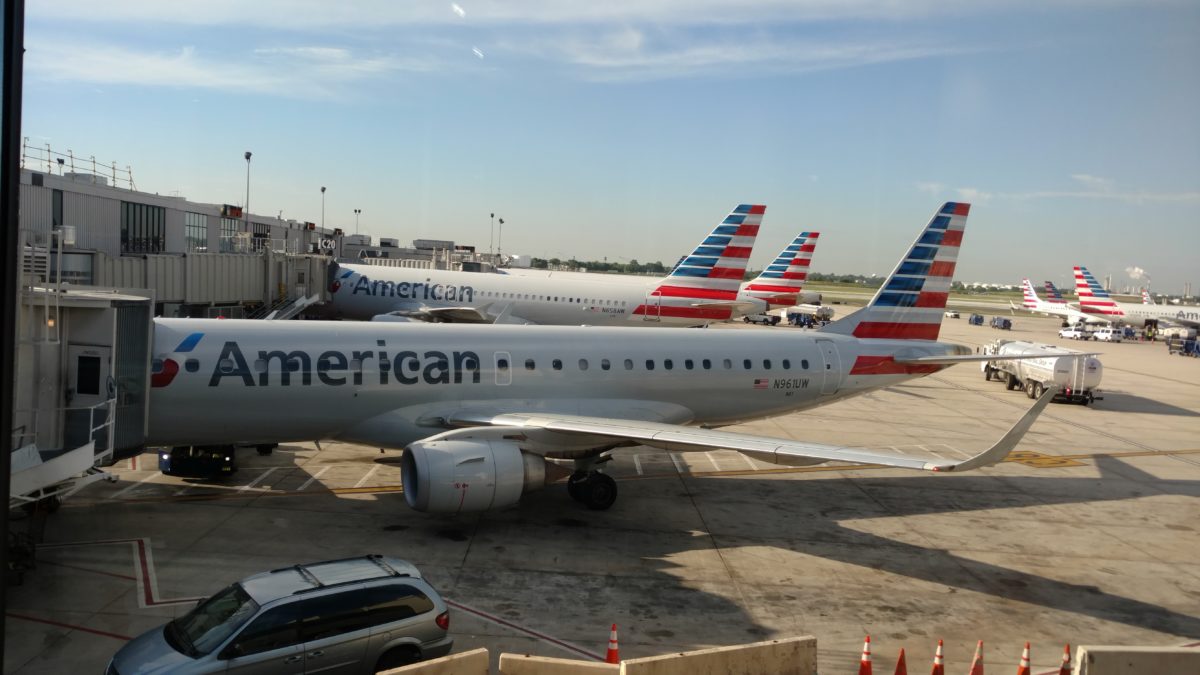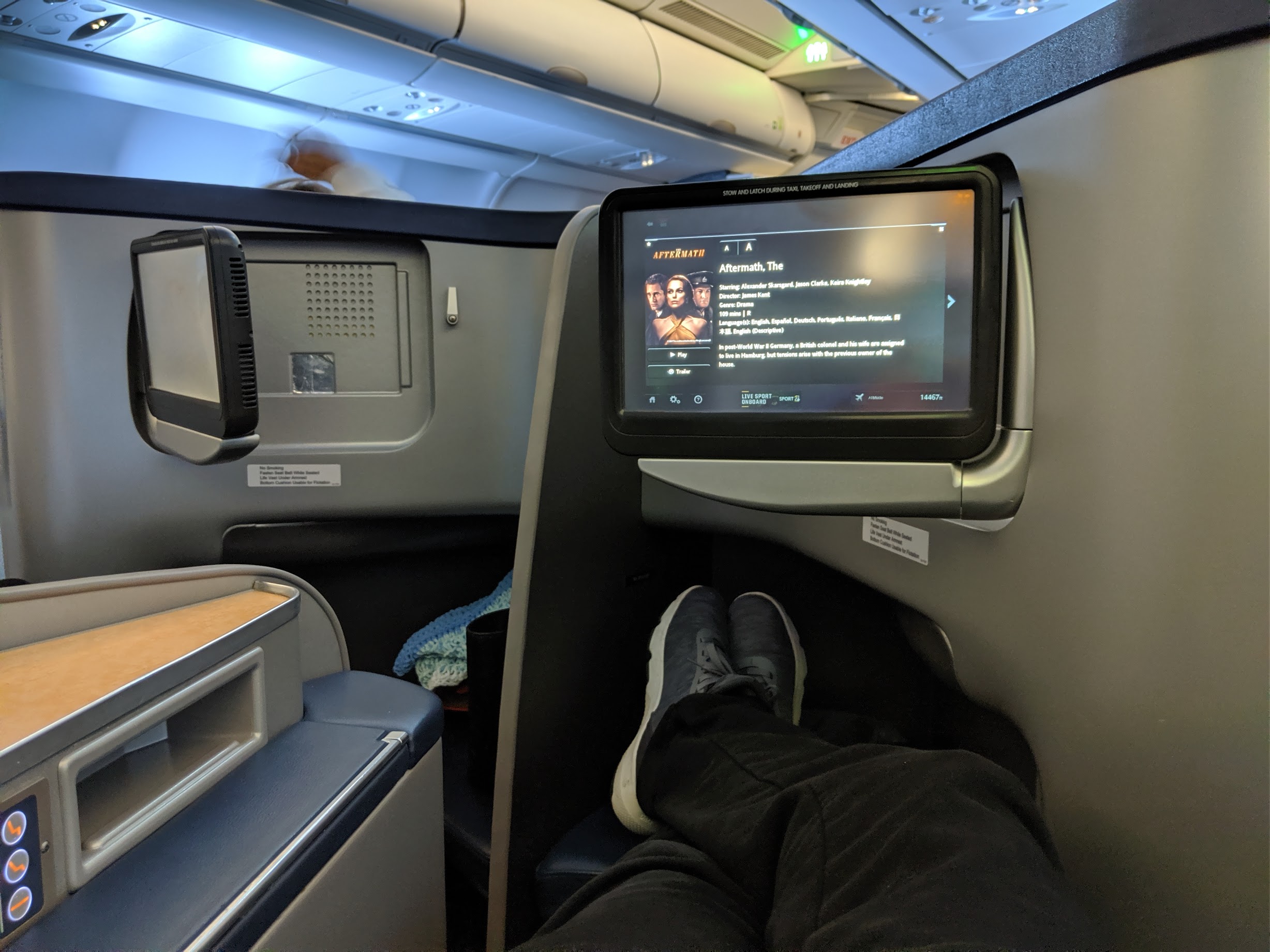American Airlines announced sweeping changes to its AAdvantage loyalty program yesterday. CNBC claimed that “American Airlines will make it harder to earn frequent flyer status next year“, but that was a huge oversimplification. The truth is that elite benefits will be easier than ever to earn for folks who learn how to play the Loyalty Points game. Requirements for the lowest tier of elite status will increase, but other tiers won’t — and suddenly, even those of us who don’t fly American Airlines frequently will have the chance to play for meaningful elite perks like systemwide upgrades. Those who primarily earned elite status by flying won’t find much to like in these changes, but they up the fun factor for those of us chasing status for sport.

American Airlines Gold will require 40K Loyalty Points (up from 30K), all other elite levels remain the same

The nugget of truth in the CNBC headline is that American Airlines Gold status, the lowest level of elite status offered by American, will require more Loyalty Points for those looking to qualify in 2023 and beyond. That change could really stink if you’re used to primarily earning Loyalty Points with paid flights since you’d need to pay for and fly an additional $2,000 in American Airlines flights at the standard 5x earnings rate in order to earn an additional 10,000 Loyalty Points (and basic economy earnings are going to drop to just 2 Loyalty Points per dollar spent).
However, there are several tiers of good news. First, you’ll earn a small benefit along the way to status. Once you reach 15,000 Loyalty Points, you’ll get Group 5 boarding (up one from general member boarding in Group 6) and the chance to choose between:
- Priority check-in, security, and Group 4 boarding for one trip
- 5 preferred seat coupons
Requirements to earn all other elite levels remain the same (though earning benefits that you might associate with those levels will change — more on that in a minute).
Offering choice benefits before reaching traditional elite status sounds an awful lot like what JetBlue just announced and I think this is a really smart play for American Airlines even if not terribly exciting. While 15K Loyalty Points isn’t much, neither is it insignificant and American is now offering a taste of what it’s like to have Gold status (which receives Group 4 boarding and preferred seat selection for free). Giving members a chance to choose which benefit is more meaningful is a good way to give them a reason to continue being loyal. Smart play, American.
For those of us playing the Loyalty Points game, the change from 30K to 40K Loyalty Points to earn Gold status isn’t a very big deal given that we’ve seen plenty of opportunities to earn miles cheaply through the AAdvantage eShopping portal and SimplyMiles and if you have an AAdvantage credit card you could use spend on that card to fill in the gap. The news is certainly a bummer for anyone accustomed to squeaking into Gold status, but for those who wouldn’t have even thought about earning status I think the choice benefit at 15K is nice and for those into the Loyalty Points Game, Gold likely wasn’t the goal anyway.
American Airlines elite status requirements and benefits
Beginning in 2023, you’ll need to earn 40K Loyalty Points for Gold status, but the number of Loyalty Points required for Platinum, Platinum Pro, and Executive Platinum will remain the same. As a reminder, here are those requirements:
- Platinum status requires 75,000 Loyalty Points
- Platinum Pro status requires 125,000 Loyalty Points
- Executive Platinum status requires 200,000 Loyalty Point
Here are the benefits associated with each level of elite status that will remain when qualifying in 2023 and beyond:
Elite Benefits
| AAdvantage elite status | Gold | Platinum | Platinum Pro | Executive Platinum |
|---|---|---|---|---|
| Loyalty Points Required | 40K | 75K | 125K | 200K |
| Mileage Bonus | 40% | 60% | 80% | 120% |
| Preferred Seating | Y | Y | Y | Y |
| Main Cabin Extra Seating | Upgrade at Check In | Y | Y | Y |
| Domestic First Class Upgrade | 24 hour window | 48 hour window | 72 hour window | 100 hour window |
| Upgrade on Alaska Airlines | Y | Y | Y | Y |
| Free checked bags | 2 | 2 | 3 | 3 |
| OneWorld Status | Ruby: Access to biz class check-in, preferred seating | Sapphire: Access to OneWorld Business Class lounges | Emerald: Access to OneWorld First and Business Class lounges | |
Other benefits that you may historically associate with elite status are going to become “Loyalty Point Rewards”, a form of milestone benefits unlocked based on the number of Loyalty Points you accumulate.
Loyalty Point Rewards choice benefits now reward players, not flyers

If you have long earned American Airlines elite status the hard way, with many hours of butt-in-seat miles, please forgive me for being a bit excited about the changes announced to the AAdvantage program. As the saying goes, don’t hate the player, hate the game.
I say that because, while this year some of the aspirational benefits of American’s higher tiers of elite status were only accessible to those who earned the associated Loyalty Points and flew at least 30 segments on American Airlines, that requirement to fly segments on American will disappear for those qualifying in 2023 and beyond. You will no longer have to fly on an American Airlines plane at all to earn valuable benefits like systemwide upgrades. Unfortunately, neither will you receive those specific benefits by virtue of achieving status but rather by earning even more Loyalty Points. The good news is that there are going to be some potentially interesting benefits along the way.
American Airlines is introducing its own version of milestone rewards that they are calling Loyalty Point Rewards. Here are the various tiers:
Loyalty Rewards 2023 and onward:
| Loyalty Points Earned | Loyalty Point Rewards |
|---|---|
| 15K | Automatic Benefit: Group 5 Boarding Choose 1: • Priority privileges & Group 4 boarding for a trip • 5 Preferred seat coupons • 1,000 Loyalty Points |
| 40K | Automatic Benefit: AAdvantage Gold Status |
| 60K | Automatic Benefits: • 20% Loyalty Point Bonus (AA Vacations, SimplyMiles, AAdvantage eShopping, AAdvantage Dining, and AA Hotels) • Avis Preferred Plus |
| 75K | Automatic Benefit: AAdvantage Platinum Status |
| 100K | Automatic Benefits: • 30% Loyalty Point Bonus (AA Vacations, SimplyMiles, AAdvantage eShopping, AAdvantage Dining, and AA Hotels) • Avis President's Club • Hyatt Discoverist Status |
| 125K | Automatic Benefit: AAdvantage Platinum Pro Status |
| 175K | Choose 1: • 2 systemwide upgrades • 20K bonus AA miles (25K w/ AA credit card) • 6 Admirals Club One-Day Passes • $200 Trip Credit ($250 w/ AA credit card) • Carbon offset • $250 donation to select nonprofit organization • 15% award rebate • 2 gifts of AAdvantage Gold status • 35K AA miles towards a Mastercard Priceless Experience • 5,000 Loyalty Points • World of Hyatt Explorist status |
| 200K | Automatic Benefit: AAdvantage Executive Platinum Status |
| 250K | Choose 2: • 2 systemwide upgrades • 20K bonus AA miles (30K w/ AA credit card) • 6 Admirals Club One-Day Passes • Admirals Club membership (requires 2 choices • $200 Trip Credit ($250 w/ AA credit card) • Carbon offset • $250 donation to select nonprofit organization • 2 gifts of AAdvantage Gold status • Bang & Olufsen product (requires 2 choices) • 1 Flagship lounge single visit pass (2 passes w/ AA credit card) • 35K AA miles towards a Mastercard Priceless Experience • 15,000 Loyalty Points • World of Hyatt Explorist status |
| 400K | Choose 2: • 1 systemwide upgrade • 25K bonus AA miles • Admirals Club membership (requires 2 choices) • $200 Trip Credit ($250 w/ AA credit card) • Carbon offset • Gift of AAdvantage Platinum status • Bang & Olufsen product (requires 2 choices) • 2 Flagship® Lounge Single Visit Passes • 1 Flagship First Dining pass • 40K AA miles towards a Mastercard Priceless Experience •World of Hyatt Category 1-4 Free Night Award |
| 550K | Choose 2: • 1 systemwide upgrade • 25K bonus AA miles • Admirals Club membership (requires 2 choices) • $200 Trip Credit ($250 w/ AA credit card) • Carbon offset • Gift of AAdvantage Platinum status • Bang & Olufsen product (requires 2 choices) • 2 Flagship lounge single visit passes • 1 Flagship First Dining pass • 40K AA miles towards a Mastercard Priceless Experience • World of Hyatt Category 1-4 Free Night Award |
| 750K | Choose 2: • 1 systemwide upgrade • 25K bonus AA miles • Admirals Club membership (requires 2 choices) • $200 Trip Credit ($250 w/ AA credit card) • Carbon offset • Gift of AAdvantage Platinum status • Bang & Olufsen product (requires 2 choices) • 2 Flagship lounge single visit passes • 1 Flagship First Dining pass • 40K AA miles towards a Mastercard Priceless Experience • World of Hyatt Category 1-4 Free Night Award |
| 1M | Choose 1: • 4 systemwide upgrades • Carbon offset • Gift of AAdvantage Platinum Pro status • Up to 100K miles back on award redemptions • 150K AA miles towards a Mastercard Priceless Experience • World of Hyatt Category 1-7 Free Night Award |
| 3M | Choose 1: • 6 systemwide upgrades • Carbon offset • Gift of AAdvantage Executive Platinum status • Up to 300K miles back on award redemptions • 350K AA miles towards a Mastercard Priceless Experience • World of Hyatt Category 1-7 Free Night Award |
| 5M | Choose 1: • 10 systemwide upgrades • Carbon offset • Gift of AAdvantage Executive Platinum status • Up to 500K miles back on award redemptions • 550K AA miles towards a Mastercard Priceless Experience • World of Hyatt Category 1-7 Free Night Award |
As you can see, American Airlines has completely separated benefits like systemwide upgrades from elite status and turned them into achievements for scoring more Loyalty Points. That will surely appeal to the gamers out there, but it does change the game in what is likely an unpleasant way for the old guard.
It isn’t entirely clear to me how some of those benefits will function in practice, but at a base level it will be possible to earn even more benefits without flying.
I’m particularly curious about a couple of the benefits in the list:
- Loyalty Point bonus at AA Vacations, SimplyMiles, AAdvantage eShopping, AAdvantage Dining, and AA Hotels (a 20% bonus unlocked for 6 months at 60K Loyalty Points and a 30% bonus unlocked for 6 months at 100K Loyalty Points). Will this be an uncapped 20 or 30% on all earnings via those avenues? This could certainly make it easier to reach higher tiers of Loyalty Points. Greg pointed out that one of these bonuses could be particularly interesting if you earned it at the end of one loyalty year. Since this bonus lasts for six months, if you earned one of these benefits right at the end of a loyalty year, you could use the bonus earnings to jump start your path toward status in the new year.
- 15% award rebate as a choice benefit option at 175K Loyalty Points. Remember that you only get one choice benefit when you reach 175K Loyalty Points. Most will likely gravitate toward systemwide upgrades. However, I wonder how the award rebate will work: will it only be valid for a single passenger? Will it work round trip or only one-way? Will it be one-time or for the remainder of the loyalty year? I could see this rebate being the most valuable choice depending on how it works (and obviously depending on whether you intend to redeem many American Airlines miles in that year).
Furthermore, I’m really curious about American’s decision to create listed benefits for those achieving levels like 1 million, 3 million, or 5 million Loyalty Points in a single year. Those numbers are obviously eye-popping quantities of Loyalty Points. Under ordinary circumstances, I would think that the only customers achieving that many points are corporate customers or large enough small businesses to be able to earn points based on a lot of spend. I would think that there would be so few people earning so many Loyalty Points in a year that it wouldn’t be worth creating and publishing those levels unless American expects to have customers reaching those levels. It would be wishful thinking on American’s part to think that there will be enough customers earning those points through paid airfares to make it worth publishing outlandish levels like 5mil LPs — again, unless American sees a path that will enable more folks to get there.
To me, this begs the question as to what kind of promotions they intend to put out via SimplyMiles and the shopping portal (or other avenues). Are they gearing up for the return of something like last year’s crazy 240x SimplyMiles promo? Every $4,166 donated to charity would have earned a million miles under that promotion. Unfortunately, that was before the days of Loyalty Points. Is the existence of these million-plus tiers an indication that something like that will come back and give us the opportunity to actually earn millions of Loyalty Points without millions in spend? Don’t misunderstand me: I don’t think we’ll see a return of 240 miles per dollar for donations to Conservation International in particular. I think that promotion worked out differently than intended and I don’t get the sense that Conservation International was interested in a repeat performance. But I do wonder what AA has up its sleeve that will make it possible for some to meet the higher tier requirements.
Upgrades to be based on rolling Loyalty Points earnings, basic economy earns fewer miles and points
Those hoping for a free upgrade should know that moving forward, upgrade priority will be based on your rolling 12-month Loyalty Points total. In other words, if two customers at the same status level are vying for an upgrade, the one who earned more Loyalty Points in the preceding 12 months will get priority. In other words, existing elite who earned their status based on the previous year will have somewhat of an advantage over new elites who did not earn Loyalty Points in the previous year.
The other key change coming is that basic economy fares will only earn two Loyalty Points per dollar spent rather than 5 beginning in 2023. That’s a huge devaluation for those who prefer Basic Economy. As my friend Ed Pizzarello of Pizza in Motion pointed out long ago, airlines appear to be trying to make a product that is so undesirable that nobody will buy it in their efforts at making Basic Economy less and less appealing. Gone are the days of flying long-distance cheap mileage run flights, but here to stay are the days of signing up for a trial subscription to Barron’s and the sort.
Does this make an AAdvantage credit card more interesting?

Up to this point, I have focused entirely on earning Loyalty Points through the AAdvantage eShopping portal and SimplyMiles. With the removal of the segment requirement to earn valuable choice benefits, I am more interested in those choice benefits than ever before. Would it make sense to get an American Airlines credit card to help give me a boost?
On this weekend’s podcast, you’ll hear Greg argue that he doesn’t see much benefit in the credit cards (beyond the obvious value of their welcome bonuses, which have little to do with earning Loyalty Points since the intro bonuses themselves do not count as Loyalty Points and neither do bonus categories). His lack of interest is because you’ll just earn 1 Loyalty Point per dollar spent on the cards available in the US. Since one could alternatively spend on a credit card that earns 2% cash back, Greg equated the choice to earn 1 American Airlines mile with paying $0.02 per mile (looks like I got through to him after all!). While I agree with him if you’re only valuing the airline miles earned, the Loyalty Points game adds an additional dimension. Not only are you earning 1 redeemable mile per dollar spent, but you are inching toward higher benefits with each dollar spent. Are those benefits “worth it”? Beauty will be in the eye of the beholder.
For instance, let’s imagine that you didn’t take advantage of any of the shopping portal shenanigans or SimplyMiles offers but rather you just spent $175,000 on an American Airlines credit card (which shouldn’t be hard for someone like Greg, who for several years spent $250K per year on Delta cards to maintain elite status). You would end up with 175,000 redeemable miles and also the benefits associated with the tiers in the chart above. You’d unlock the chance at 2 systemwide upgrades at 175K. While I think the 15% award rebate could be more valuable depending on how it works, let’s imagine that you’re confident that you’ll be able to use the systemwide upgrades to good value. Might it make sense to have spent $175K to get them?
To keep the math simple, let’s say that you value American Airlines miles at just 1c per mile, so your $175K in spend essentially generates 1% back in AA miles. If you get more than $1,750 in value out of the two systemwide upgrades (an additional 1% in value), you are perhaps “ahead” of a 2% cash back card (at least by some measure). Would I recommend taking 175K AA miles and 2 systemwide upgrades over the alternative ($3,500 cash if that spend were on a card that offers 2% cash back)? It wouldn’t be a clear “yes”, but neither would I be convinced that the answer is certainly no. If you intend to use those AA miles to fly Etihad apartments between London and Abu Dhabi for instance, which you could do round trip for one or one-way for two passengers and have miles left over and you are confident that you can use the upgrades to good value, maybe it isn’t totally insane. To be clear, I do think it would be crazy to spend $175K on an AA credit card rather than learning how to leverage the other parts of the Loyalty Points game, but from a value perspective I think someone could make an argument that I’d disagree with but respect.
More realistically though, some people will use an American Airlines credit card to fill in the gaps. For instance, if you would have earned the 125K Loyalty Points necessary for Platinum Pro status through your natural combination of the portal, SimplyMiles, flying, etc, but not the 175K points necessary for the higher-tier choice benefits, maybe it wouldn’t be nuts to consider spending $50K on an AA credit card (assuming you have the spend to support that). It becomes far less nutty as you get closer to a valuable tier with regular activity.
While I’m not excited by the opportunity to earn 1x airline miles or 1x Loyalty Points for credit card spend (or both as the case may be), I will certainly be more tempted to consider an American Airlines credit card if I anticipate needing to fill a gap. I’d certainly want to consider the timing of getting a card since any spend put toward the intro bonus spending requirement would yield 1 Loyalty Point per dollar spent (might as well earn those Loyalty Points when the points are meaningful). I don’t currently have an American Airlines credit card; the chance to pick up perks might convince me to want one.
Bottom line
American Airlines is clearly recognizing that its most profitable customers aren’t necessarily those flying in its airplanes but rather those creating the opportunity for them to sell more airline miles. Starting in 2023, those who play the Loyalty Points game well will be able to reap more reward than ever before thanks to the elimination of the requirement to fly 30 segments on American Airlines to get the most valuable benefits. Unfortunately for those who are used to earning status the old-fashioned way, elite status will have far less value than before. Still, on the whole, I think this makes American Airlines far more interesting to far more people and gets them to invest in caring about earning miles every day rather than only when they fly. I take these changes as a win while recognizing that for some they will be a sore spot. But compared to the old days of flying 200,000 butt-in-seat miles to get top-tier benefits, I’d argue that it is now easier than ever before for the casual traveler to earn the benefits typically associated with airline elite status. That’s what makes the Loyalty Points game fun — so game on.





I’m wondering how this works from the prospective of family travel. If you travel with 2 adults , 2 kids, and one adult gets auto upgraded are you able to refuse the upgrade if you are not upgraded with the rest of the party? Then if so, I would assume both adults would need status since this only works with one companion. I’m wondering if you can make it worthwhile still in this situation. Any thoughts?
Earning 2x on a Citi AA Business card at a gas station is not that bad! AA miles are worth at least one cent. I value AA miles relatively high. On the other hand, I would be giving up earning 4x at gas stations on my Amex Business Gold.
(Min value -> 4 points * $.011 Schwab = $.044)
Are 2 AA miles plus 1 loyalty point worth $.044? Would you buy 1 AA mile plus half loyalty point for $.022?
PS Despite the analysis above, I am slowly accumulating AA miles and loyalty points primarily via the AAdvantage shopping portal. I don’t have a way to purchase AA miles with a transferable currency.
I’m dreaming of a Conservation International Christmas!
I know there’s close to 0% chance it will happen but would love to know if any blogger reaches out to them this season.
I think Gary Left reached out to them last year and I can’t remember the exact response he reported but it was clear they were not interested in even discussing it further. I didn’t get the sense that they were interested in being contacted about it again.
So has anyone else had this issue… on one flight it is doing the points calculation off of miles flown, and other times it’s doing it off of the fare. I have flow to Europe 7 times this year, and I have gotten as many as 30,000 points for a round trip and as few as 6,000 points. It makes no sense to me at all. And the funny thing is, the fare classes on those two examples were the same.
Car rentals with budget and Avis earn 2x-5x loyalty points. I paid $325 and received 975 loyalty points. 3x for holding an advantage platinum card with no status
Great post. So when do we start the chatter again about getting LPs for miles earned via Bask?!
Hi Nick. You’ve mentioned systemwide upgrades a number of times in the article and the comments. I’ve hit the 350K mark in LP’s so I’m naturally wondering where to go on the choice awards, including SWU’s. Any gems of insight you can provide about how easy or hard it is to find upgrade space on intercontinental AA flights? The upgrades are the heavy hitters but if the fare bucket availability is crazy hard to find, they become pretty close to worthless, especially since you need a paid ticket to use them.
Wondering how getting rid of saver award space works for award booking. I’m sitting on a stack of British Airways Avios from a canceled trip that I prefer to use for direct AA flights, any thoughts on how that dynamic might change?
The only thing left is for American Airlines Group to be renamed Aadvantage Inc.
The US Big 3 are green stamps that happen to run airlines.
Another overlooked benefit is the new 20% loyalty point bonus for AA shopping, hotels, Simply Miles, etc. which comes at 60k LP. That kicks up to 30% when you hit 100k LP. That effectively lowers the number of LPs you need to earn for higher status. If the ONLY LPs you earned were through AA partner spend, this would mean you would need only 72.5 LP to Platinum (3.3% discount), 112,654 LP to Platinum Pro (9.9% discount), and 170,256 to Executive Platinum (14.9% discount). Someone check my math on this, but I think that’s right.
I didn’t overlook it, I said it one of the things I find most interesting!
Ugh. Shows me for speed reading.
what are the chances that this would also count towards doing surveys? from milesforopinions? Because i was surprised earlier this year when doing my surveys that I was earning loyalty points from it also?
I’d just prefer to drive my Tesla.
Who cares?
I briefly looked into AA status based on the Hyatt status match promotion and the fact that I fly Alaska on the West Coast fairly frequently.
The issue with the AA loyalty program is that for the non-MS crowd, you’d have to concentrate entirely on their program to get anywhere even if you fly them regularly on non-business/first class fares.
There’s opportunity costs associated with using the AA portal vs. Capital One Shopping or Rakuten, same with using a AA branded credit card as neither offers the best value. At least for me, my whole loyalty game would have to revolve around AA to get me to Platinum Pro or beyond which would make the game extremely boring.
For the MS crowd, we’ll see how tolerant CITI and Barclay will be on MS on their cards.
Absent from the list of Loyalty Point Bonus is RocketMiles. I have used that some to capture a bunch of LPs as the price usually seems to be marginally cheaper than AA Hotels. If it is actually excluded from the bonus list, I would probably switch to AA Hotels after nearing 60K.
I guess I just don’t understand why you guys are so interested in AA status. Is it really that valuable or are you chasing it “for sport?” Greg doesn’t even live in an AA hub.
100% agree and my home airport is DFW! P2 and good friend are lifetime Platinum. He 4 million miler and she 2 million. It means nothing. A good credit card gets the same only when traveling. Put your spend on transferable points. No airline is worth it IMO.
There’s an awful lot of YMMV. I live in Tennessee and frequently fly through CLT on American. The only viable alternative is Delta and their avalanche of devaluations over the past several years shows what they think of engaged loyalty members, so AA it is. I’ve gotten upgraded on about half of my short haul flights with AA and their network works for me.